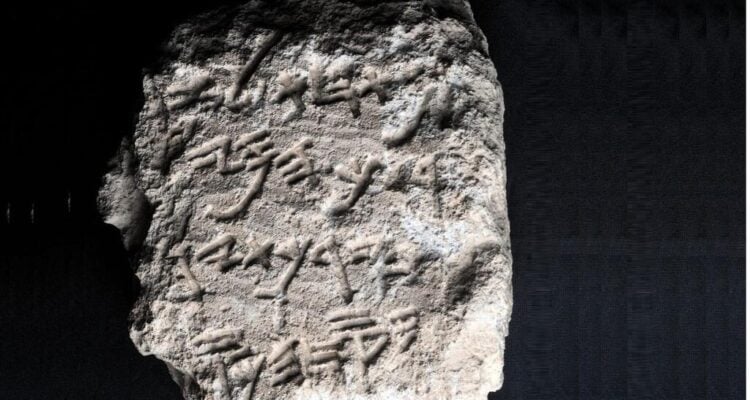|
Getting your Trinity Audio player ready...
|
By Batya Jerenberg, World Israel News
Using advanced imaging techniques, a Biblical scholar has decoded a rock-engraved inscription from the First Temple era that was discovered in 1982 but whose contents had never been fully deciphered, Ynet reported Tuesday.
Prof. Gershon Galil, head of the Institute for Biblical and Ancient History Research, said that the four lines on the 27cm x 23 cm tablet, which is a fragment of a much larger stone, refer to three of four actions King Hezekiah is most famous for, as per other inscriptions glorifying him that have been found to date.
These were the building of a tunnel to bring water from a pool outside Jerusalem’s walls into the city in the face of an expected siege, to protect the vital resource; accruing huge wealth; and a successful war against the Philistines.
Many words in the four extant lines that could not be seen until now were revealed, including the length of the water tunnel (two hundred thousand cubits), the fact that “silver and gold was amassed,” and that “men from there” were “displaced,” the latter word having been decrypted without its object. According to Galil, the missing words referred to the displacement of people following war with the Philistines, as the same verb is used in Scriptures in a similar context of displacing people from their land.
“As is known,” he explained, “in the inscriptions of Sennacherib, it is told of the exile of Padi, the Philistine king of Ekron, by Hezekiah to Jerusalem.”
The discovery was made thanks to two digital techniques, photogrammetry and Reflectance Transformation Imaging (RTI).
“Photogrammetry is a process of 3D photography that allows for detailed and meticulous study of the content from every possible angle,” explained Prof. Moshe Caine, head of the Jerusalem Institute for the Research and Digital Documentation of Cultural Heritage at Hadassah Academic College, who undertook the project with Galil.
RTI digitally photographs an object multiple times, each time with light projected from a different direction, which helps reveal heretofore hidden characteristics of the object’s surface. Last year, two researchers used RTI to discover that damaged lettering in the famed Mesha Stele included a reference to the “House of David” in a Moabite battle with Omri, “king of Israel,” to prove again the ancient Jewish kingdom’s existence from a non-Biblical source.
According to Galil, the fourth thing Hezekiah was most famous for was what led to the difficulty in understanding this fragment, as well as others that have been found over the years.
The Biblical account of his reign emphasizes his righteousness and determination to return the people to worshipping God rather than idols. Those opposing Hezekiah’s religious devotion intentionally destroyed inscriptions mentioning his name and his projects after his death, he said.
“All of Hezekiah’s inscriptions were intentionally shattered and defaced in an aggressive attempt to hide them,” Galil noted.
In the case of this stone, he said, “someone intentionally damaged and then shattered the inscription, which originally was probably about 120 cm in width and 50-60 cm in height. If it was located in the Ophel, it was shattered on-site. And higher up on the Temple Mount, they also threw parts of the inscription off the wall, southward and downward, where it lay waiting for its discovery and deciphering for more than 2,700 years.”
The holiday of Sukkot, which begins this Friday night, will be the 41st anniversary of the stone tablet’s discovery.




